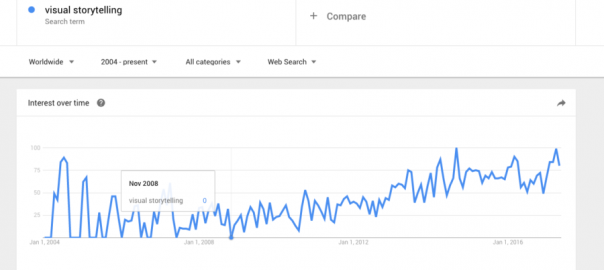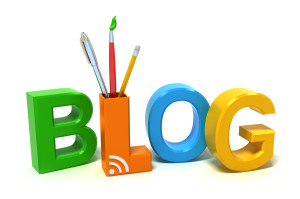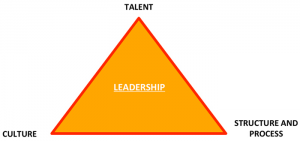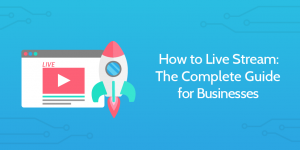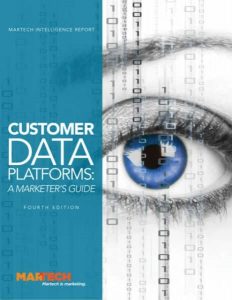15 Tools, Techniques and Examples to Help Cut Through the Noise
The world’s biggest brands and ideologies were built on stories. That’s no exaggeration: every major idea, from Star Wars to Apple to Western Democracy to Christianity and Islam, wouldn’t be where it is without the power of storytelling.
And in the modern world, stories are a ubiquitous marketing tool as well.
Bill Gates predicted this would happen in his “Content is King” essay back in 1997. 20 years on, blog posts – i.e. text-based stories – are the most profitable kind of content.
They’re also the most popular type of content with 2 million new blog posts released each day.
This is not only a testament to the enduring power that stories have, it is an indicator of how crowded and competitive text-based content is becoming. Although 70% of B2B marketers are planning to create more content this year than they did in 2016, only 3 in 10 of them believe they’re effective at content marketing. This is down from 38% last year – and reflective of the increasing difficulty of marketing via stories alone.
The question is, how can you do better? How can you firmly position yourself in the minority of marketers that see strong lead generation and SEO results from their content?
We believe the answer is visual storytelling.
After reading this article, you may find yourself agreeing. We’ll kick off by explaining what visual storytelling is and what it can do for your brand. Afterwards, we’ll get into specific examples, techniques, and tools you can use to create powerful, high-ROI visual stories for your brand.
What Is Visual Storytelling – and What’s in It for Your Brand?
Put simply, visual storytelling is exactly what it sounds like: real and fictional stories told through the use of images, videos, and interactive visual content.
The term itself is new. As recently as November 2008, there were virtually no Google queries for the word combination:

But while the phrase is new, visuals have always been a huge part of each and every ideology and brand we mentioned in our introduction.
From Star Wars’ Darth Vader…
To beautiful works of religious art…

To Apple’s hallmark “Big Brother” ad…
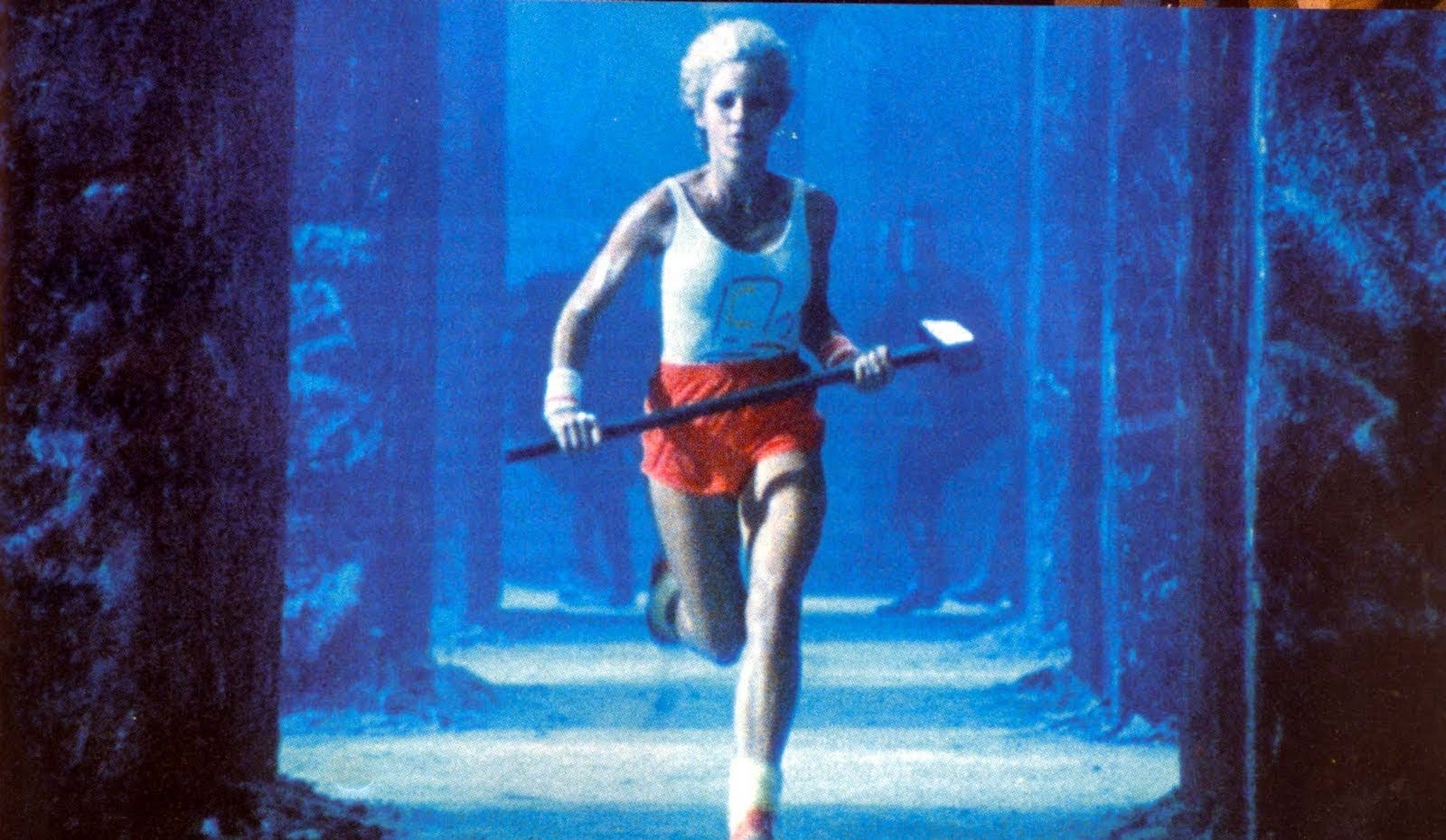
Examples of visual storytelling are everywhere. In fact, even though you may think of storytelling as primarily verbal and text-based, the fact is that the oldest recorded stories were purely visual, having predated writing by thousands of years!

Why is all of this so important to your business today?
The main reason is that in the past, only the biggest and richest organizations could afford to create and distribute visual content. As recently as 2010, something as simple as an infographic could cost thousands of dollars to produce.
The idea of creating entire stories based on visuals was a pipe dream for small and mid-sized businesses.
This has changed.
Today, there’s a variety of tools that make it dead easy to use visual storytelling for marketing purposes. Instagram alone has birthed tens of thousands of entrepreneurs who market their products entirely by telling their brand stories through images.
The second reason is that the world is hungry for content. Thanks to mobile devices and social networks, an average user now views about 20 hours of digital media each week.
The rising popularity of Instagram, Snapchat and Facebook Live reflects the degree to which visual content dominates that time. So does the incredible popularity of Pokémon Go: a game that peaked at 45 million (!!!) daily users thanks to interactive, V.R.-enabled visual content.

The final reason is that images and videos are perfect for getting marketing messages across. Just consider that …
- Visuals are processed up to 60,000 times faster than text
- People remember 6.5x more text-based data when it’s paired with images
- Pictures transmit up to 8,400% more information than words
The only question is, how do you maximize the power of visuals by weaving them into your brand story in a way that’s relevant, profitable and consistently effective?
You’ll find the answers below in the form of visual storytelling examples you can mine for ideas; visual storytelling tools to use in your business; visual storytelling techniques to apply in your campaigns.
We’ll start with the examples.
EXAMPLES
Murad Osmann – Follow Me

Murad’s story is simple. He’s a traveling photographer whose girlfriend got annoyed every time he’d stop to take yet another series of snapshots.
She’d pull him away from the photo opportunities – and he started taking and publishing photos of her doing it:

The photos quickly turned into a series that told the tale of a young, attractive couple traveling the world and holding onto one another. The series was called “Follow Me”, and it became an instant and worldwide phenomenon.
As of today, Osmann has well over 4 million followers on his Instagram account. A kaleidoscope of businesses has used his work and storytelling concept to tell their own brand stories.
This makes his case a perfect example of how one visual story told by a single person can turn into an entire business.

The takeaway from the story itself is that emotions combined with quality visuals have incredible viral potential.
The idea of a couple holding hands while traveling is universally touching; to connect with your own followers, use ideas that are just as emotionally relatable.
Another takeaway, which we’re about to highlight in the next point, is consistency of format. Murad’s photographs all feature the exact same composition; something the next business on our list uses to great effect.
Game of Thrones

Game of Thrones is a series of books turned TV show megahit, meaning there’s inherently a story for them to tell.
TV series’ use social media content as the primary tool to reach their followers, and this poses a uniformity problem. The risk of posting lots of visuals that are excellent but scattershot in form is rather high.
How did the GoT marketing team solve this challenge?
By creating cartoonish computer animations (and physical dolls) that they use in every single image on their Instagram feed. These characters maintain the feel of a cohesive story, even when the marketing message isn’t directly related to the Game of Thrones narrative.
Here’s a C.G. recreation of scene familiar to all GoT fans, used to remind us a new season is about to start:

Here’s one of the cartoonish characters being held by Peter Dinklage in behind-the-scenes footage from an awards show:

Of course, visual stories don’t necessarily have to be told over time and across multiple marketing messages. You can relay a powerful narrative using images on just one page like the brand below did.
UK Energy Consumption Guide

The U.K. energy consumption guide is quite different to the examples above – it is a one-page presentation. It’s also different because it combines interactive text and images to maximize the amount of information delivered while making it more memorable.
That’s the main takeaway here: that images + text pack a much stronger punch than either media type on its own.
Of course, it’s easy to look at a webpage this beautiful and think, “that cost tens of thousands of dollars to make. We don’t have the know-how (or the budget) to make anything like this!”
Fortunately, there are plenty of tools that allow you to make interactive content regardless of your budget. We’ll share five of them in the final section of this article – but for now, let’s look at a simpler, semi-interactive example of visual content.
Inception Explained

Anyone who’s seen the movie “Inception” has wondered, at some point or another: what the heck is going on here?
Answering the question once and for all is the website Inception Explained.
Nobody’s sure whether the site is an under-the-radar marketing effort, a fan-made creation or something else entirely – but one thing’s for certain. The film’s story is beautifully told on just one page.
Although the page has the feel of interactive visual content, it’s actually a scrollable presentation with enough frames-per-scroll to appear seamless.
The takeaway here is that you don’t have to get fancy to get interactive. Basic tools, like the ones we’re going to give you in a minute, are enough. In fact, you can harness using the power of visual storytelling using “just” pictures and videos.
Just check out the next example below!
Mac vs. PC

This is an oldie but a goodie from the early 00s, when Apple computers were still the underdog to Windows PC’s dominant brand.
In their “Get a Mac” video series, Apple portrays PC’s as formal, old-fashioned and a little bit ditzy. The “Apple” character, on the other hand, is youthful; hip; savvy.
Instead of using data and facts to persuade customers, Apple simply told their brand stories using videos – and it worked beautifully. The campaign played a major part in the business’s ongoing success.
The takeaway here is that it’s okay to reach people with emotions and associations; not logic. Raw data goes well with visuals, but visuals also work just fine on their own.
Now that we’ve looked at these examples, let’s look into specific tactics that you can use to tell an effective story using image-based media!
TACTICS
The Problem-Solution Gap
This is a classic storytelling device. First, you present a current problem. Second, you either infer or offer an ideal desired outcome. Then you present your offer as the shortest or best possible way from point A to point B.
A perfect example of this storytelling device is the Exodus story, as told by a variety of films. First, we see the Hebrews enduring brutal slavery under the Egyptians.

The solution is not expressed but rather implied by the brutality of the Egyptian regime contrasted against the viewer’s modern viewpoint.
Thus we have a problem and an (implied) solution. This makes viewers naturally curious to watch Moses’s quest to free the Hebrews:

To use the technique for yourself, demonstrate a problem using visual aides. Then, show an ideal situation – and how your product can help bridge the gap. That’s it!
The Context Flip

Use imagery to highlight to give a new perspective to a familiar idea. Nike does this beautifully in this ad, where the main character is revealed to be a wheelchair basketball player at the very last moment.
It’s not what the audience expects – and the contrast makes Warhawk Matt Scott’s story particularly memorable.
You can also use contrast to maximize the power of visual storytelling by using…
The Exotic Story

When James Cameron transferred the Pocahontas story against an exotic, alien situation, we got “Avatar”.
When Richard Turere of the Maasai community set the story of a simple, solar-powered device against images of life as an African cowherd, we got this fascinating Ted presentation.
You can do the same to spice up any story, no matter how mundane at its core. Simply take an exotic, unfamiliar visual and add them to your core story to instantly make it more interesting.
The Personal, Authentic Story

Nothing is quite as moving as personal, intimate images and videos. Case in point: Albert Cairo’s TED presentation combined eye-catching props and images of his Afghanistan clinics to emotionally connect with his audience.
Your brand likely doesn’t have “personal” images of its own – but you can either use user-generated content or ask your stakeholders to provide recorded content to reach the same effect.
The Symbolic Story

Some stories don’t have to be true-to-life. In fact, they don’t have to be true at all. Instead, they can be symbolic and representative of something greater and better than reality.
For example: James Bond is representative of U.K. culture to hundreds of millions of people around the world. He’s the quintessential Brit, and even though his lifestyle has little to do with reality, his visual story is magnetically powerful.
Just be very careful to tread the line between “symbolism” and “generalization” tactfully! You want your visual content to represent what every viewer wants to be a part of. You don’t want to make crass generalizations, here or anywhere else.
Now that we’ve looked at visual storytelling examples and visual storytelling techniques, let’s get into the final stretch and look at 5 tools you can use to make all of the above a reality in your business.
TOOLS
Facebook, Instagram and SnapChat Live Videos
80% of users would rather watch a live video than read a blog post. This means that, whether you like it or not, visual storytelling tools #1-#3 are Facebook; Instagram; SnapChat.
The first cool thing about all 3 platforms is that they’re somewhat interactive, allowing users to give you responses and comments in real-time. The other cool thing is that these platforms give you access to over 2 billion potential viewers.
Next, we’ve got…
Quizzes
Quizzes get incredible amounts of traction and engagement. Visual quizzes, where videos, photos and text all contribute to the user experience, are particularly powerful.
Interactive Video
With modern technology, live videos are only somewhat interactive – but pre-recorded videos can be programmed to highlight information, ask questions and even quiz viewers.
Below is an example of an interactive video made using YouTube. This is the free way to make interactive videos.

If you want to get a little fancier than this, you can use a platform like SnapApp; especially if you want to use interactive videos to boost lead generation.
Instagram
Instagram is the “grand-daddy” of visual storytelling tools. Don’t listen to anyone telling you it’s “old”, “outdated” or “too competitive”. It’s a must-have in any visual storytelling arsenal.
Data Visualizations & Infographics
An infographic can tell an entire story, end to finish. A data visualization can compress and spruce up boring old data with fresh, easy-to-remember images. And with modern online tools, like infogr.am, you can make both easily (and without breaking the bank)!
And that, in a nutshell, is it! Well done for making it all the way through this article.
You now have the visual storytelling techniques, tools and examples you need to connect with your audience effectively and maximize your content marketing results.
Let’s just recap what we learned today. Our visual storytelling examples were:
- Murad Osmann’s “Follow Me” campaign
- Game of Thrones’ Marketing
- The UK Energy Consumption Guide
- Inception-explained.com
- Apple’s “Get a Mac” campaign
The techniques we covered were:
- The problem-solution gap
- The context flip story
- The exotic background
- The personal, authentic story
- The symbolic story
And finally, 5 types of tools you can (and should) use to make visual content:
- Live videos
- Instagram images
- Interactive videos
- Quizzes with visuals
- Data visualizations and infographics
(109)
Report Post